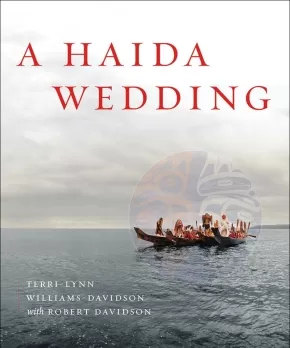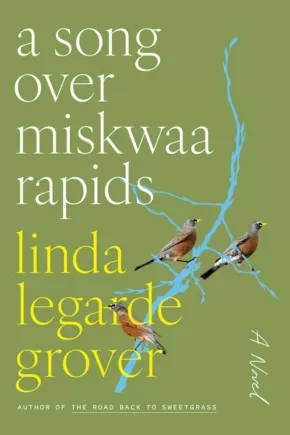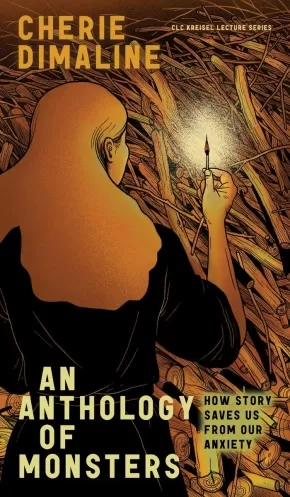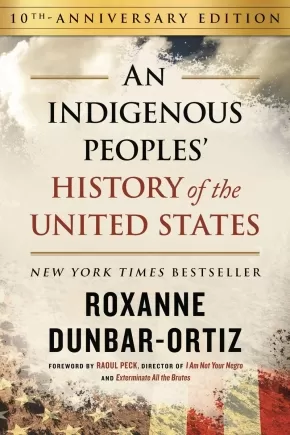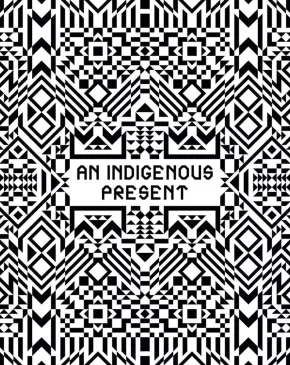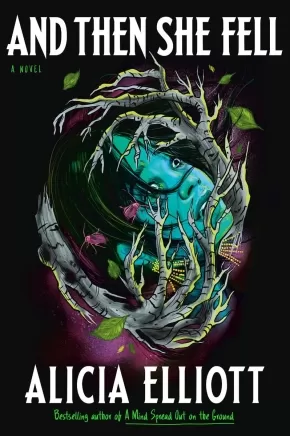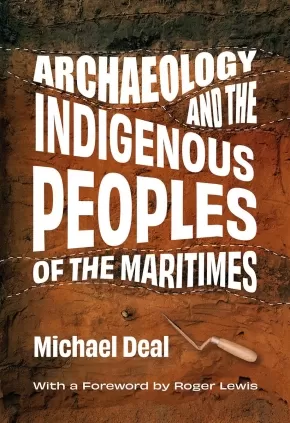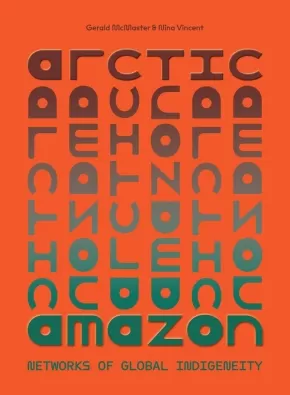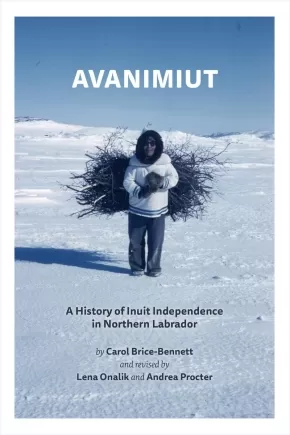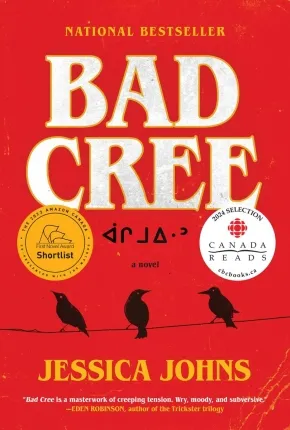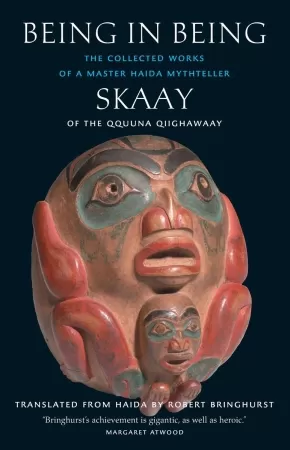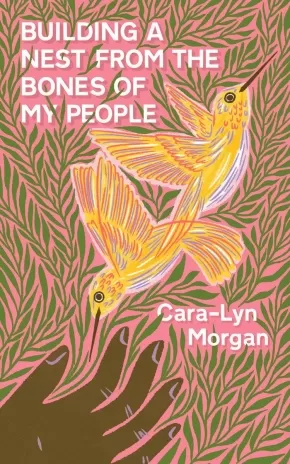
Indigenous Studies
226
-
240
of
1030 Results;
Sort By
Go To
of 69
A Haida Wedding
$29.95
Format:
Hardcover
Reading Level: N/A
ISBN / Barcode: 9781772034516
Synopsis:
Synopsis:
A visual and cultural celebration of a traditional Haida wedding ceremony, exploring its roots, rituals, symbolism, joyfulness, and contemporary significance for a thriving Indigenous Nation.
In 1996, Terri-Lynn Williams and Robert Davidson celebrated their wedding with a traditional ceremony, the first in over a century that was legalized under Haida law. This book provides an intimate photographic window into that momentous day and marks the resurgence of a tradition that was nearly lost to colonial forces.
Relying on recorded knowledge their ancestors had shared with ethnographers and anthropologists, and the few details living Elders could recall about the tradition of guud ‘iina Gihl (“becoming married”) in the time before the arrival of Christian missionaries, the couple carefully planned out a seven-part celebration. It involved a canoe procession, ceremony, feast, dancing, and dowry payment, signifying the coming together of two people, two families, and two clans. The occasion is lovingly and painstakingly recounted through imagery and text in this fascinating tribute to a resilient culture and the unbreakable bonds of love and family.
Additional Information
128 pages | 8.75" x 10.50"| Hardcover
A Song over Miskwaa Rapids: A Novel
$30.99
Format:
Hardcover
Text Content Territories:
Indigenous American; Native American; Anishinaabeg; Ojibwe (Chippewa);
Reading Level: N/A
ISBN / Barcode: 9781517914622
Synopsis:
Synopsis:
A fifty-year-old mystery converges with a present-day struggle over family, land, and history.
When a rock is dislodged from its slope by mischievous ancestors, the past rises to meet the present, and Half-Dime Hill gives up a gruesome secret it has kept for half a century. Some people of Mozhay Point have theories about what happened; others know—and the discovery stirs memories long buried, reviving a terrible story yet to be told.
Returning to the fictional Ojibwe reservation in northern Minnesota she has so deftly mapped in her award-winning books, Linda LeGarde Grover reveals traumas old and new as Margie Robineau, in the midst of a fight to keep her family’s long-held allotment land, uncovers events connected to a long-ago escape plan across the Canadian border, and the burial—at once figurative and painfully real—of not one crime but two. While Margie is piecing the facts together, Dale Ann is confronted by her own long-held secrets and the truth that the long ago and the now, the vital and the departed are all indelibly linked, no matter how much we try to forget.
As the past returns to haunt those involved, Margie prepares her statement for the tribal government, defending her family’s land from a casino development and sorting the truths of Half-Dime Hill from the facts that remain there. Throughout the narrative, a chorus of spirit women gather in lawn chairs with coffee and cookies to reminisce, reflect, and speculate, spinning the threads of family, myth, history, and humor—much as Grover spins another tale of Mozhay Point, weaving together an intimate and complex novel of a place and its people.
Reviews
"A sprawling, poignant chronicle of struggle and survivance."—Kirkus Reviews
"With its powerful, atmospheric descriptions of the natural world, A Song over Miskwaa Rapids resembles an Indigenous family saga in miniature, couching memory and mystery in a potent spirit world."—Foreword Reviews
Additional Information
128 pages | 5.50" x 8.25" | Hardcover
acâhkos nikamowini-pîkiskwêwina?: nêhiyawi-kîsik âcimowin? The Star Poems: A Cree Sky Narrative
$24.95
Format:
Paperback
Text Content Territories:
Indigenous Canadian; First Nations; Cree (Nehiyawak);
ISBN / Barcode: 9781778690174
Synopsis:
Synopsis:
Aided by Grandmother Spider, Star Woman discovers the Hole-in-the-Sky, opening a pathway for the Star People to experience the wonder of life on earth. But the world falls into the hands of the Paper People, jeopardizing the sacred harmony between nature and the cosmos. And so Little Spirit, a young boy, must search for meaning and find redemption in the care of Grandmother Moon.
An epic narrative, The Star Poems explores the black hole of colonial history—Residential Schools, the loss of the father, youth suicide—and the vital role of women in reclaiming our traditional knowledge, the teachings that stitch together the fabric of the universe.
The Star Poems creatively engages Cree oral tradition in a new way, connecting Indigenous spirituality and quantum physics to honour and adapt some of our most ancient stories about the origins of life and our place in the universe. Presented in both English and Cree, The Star Poems is a timely contribution to the revitalization of the Cree language—and the fascinating world of star stories.
Educator Information
Recommended for ages 15+
Additional Information
132 pages | 6.00" x 9.00" | Paperback
An Anthology of Monsters: How Story Saves Us from Our Anxiety
$14.99
Format:
Paperback
Text Content Territories:
Indigenous Canadian; Métis;
Grade Levels: 12; University/College;
ISBN / Barcode: 9781772126822
Synopsis:
Synopsis:
An Anthology of Monsters by Cherie Dimaline, award-winning Métis author of The Marrow Thieves, is the tale of an intricate dance with life-long anxiety. It is about how the stories we tell ourselves—both the excellent and the horrible—can help reshape the ways in which we think, cope, and ultimately survive. Using examples from her published and forthcoming books, from her mère, and from her own late-night worry sessions, Dimaline choreographs a deeply personal narrative about all the ways in which we cower and crush through stories. Witches emerge as figures of misfortune but also empowerment, and the fearsome Rougarou inspires obedience, but also belonging and responsibility. Dimaline reveals how to collect and curate these stories, how they elicit difficult and beautiful conversations, and how family and community is a place of refuge and strength.
Educator Information
Keywords / Subjects: Stories; Anxiety; Panic; Rougarou; Family; Community; Métis; Witches; Insomnia; Coping; Worries; Grandparents; Empower; Belonging; Responsibility; Mental Health; Biography; Essays; Canadian Literature
Additional Information
64 pages | 5.25" x 9.00" | Paperback
An Indigenous Peoples' History of the United States (10th Anniversary Edition)
$38.95
Format:
Hardcover
Text Content Territories:
Indigenous American;
Reading Level: N/A
ISBN / Barcode: 9780807013076
Synopsis:
Synopsis:
The first history of the United States told from the perspective of indigenous peoples
Today in the United States, there are more than five hundred federally recognized Indigenous nations comprising nearly three million people, descendants of the fifteen million Native people who once inhabited this land. The centuries-long genocidal program of the US settler-colonial regimen has largely been omitted from history. Now, for the first time, acclaimed historian and activist Roxanne Dunbar-Ortiz offers a history of the United States told from the perspective of Indigenous peoples and reveals how Native Americans, for centuries, actively resisted expansion of the US empire.
With growing support for movements such as the campaign to abolish Columbus Day and replace it with Indigenous Peoples’ Day and the Dakota Access Pipeline protest led by the Standing Rock Sioux Tribe, An Indigenous Peoples’ History of the United States is an essential resource providing historical threads that are crucial for understanding the present. In An Indigenous Peoples’ History of the United States, Dunbar-Ortiz adroitly challenges the founding myth of the United States and shows how policy against the Indigenous peoples was colonialist and designed to seize the territories of the original inhabitants, displacing or eliminating them. And as Dunbar-Ortiz reveals, this policy was praised in popular culture, through writers like James Fenimore Cooper and Walt Whitman, and in the highest offices of government and the military. Shockingly, as the genocidal policy reached its zenith under President Andrew Jackson, its ruthlessness was best articulated by US Army general Thomas S. Jesup, who, in 1836, wrote of the Seminoles: “The country can be rid of them only by exterminating them.”
Spanning more than four hundred years, this classic bottom-up peoples’ history radically reframes US history and explodes the silences that have haunted our national narrative.
An Indigenous Peoples' History of the United States is a 2015 PEN Oakland-Josephine Miles Award for Excellence in Literature.
Reviews
“Meticulously documented, this thought-provoking treatise is sure to generate discussion.”—Booklist
“What is fresh about the book is its comprehensiveness. Dunbar-Ortiz brings together every indictment of white Americans that has been cast upon them over time, and she does so by raising intelligent new questions about many of the current trends of academia, such as multiculturalism. Dunbar-Ortiz’s material succeeds, but will be eye-opening to those who have not previously encountered such a perspective.”—Publishers Weekly
"Roxanne Dunbar-Ortiz’s An Indigenous Peoples' History of the United States helped me clarify my place in this country. It confirmed what had been told to me by my ancestors: that Indigenous peoples, from the North Pole to the South, have been here since before the world was known as round. As a conquering nation, the United States has rewritten history to make people of the U.S. forget our past as natives to this land. This is especially apparent in the Mexi-phobic, immigrant-phobic policies of our time.
An Indigenous Peoples’ History of the United States (2014) helped me clarify my place in this country...This book is necessary reading if we are to move into a more humane future."—Sandra Cisneros, author of The House on Mango Street
“A must-read for anyone interested in the truth behind this nation’s founding.” —Veronica E. Velarde Tiller, PhD, Jicarilla Apache author, historian, and publisher of Tiller’s Guide to Indian Country
“This may well be the most important US history book you will read in your lifetime. . . . Dunbar-Ortiz radically reframes US history, destroying all foundation myths to reveal a brutal settler-colonial structure and ideology designed to cover its bloody tracks. Here, rendered in honest, often poetic words, is the story of those tracks and the people who survived—bloodied but unbowed. Spoiler alert: the colonial era is still here, and so are the Indians.”—Robin D. G. Kelley, author of Freedom Dreams
“Dunbar Ortiz’s . . . assessment and conclusions are necessary tools for all Indigenous peoples seeking to address and remedy the legacy of US colonial domination that continues to subvert Indigenous human rights in today’s globalized world.”—Mililani B. Trask, Native Hawai‘ian international law expert on Indigenous peoples’ rights and former Kia Aina (prime minister) of Ka La Hui Hawai‘i
Additional Information
328 pages | 6.38" x 9.30" | Hardcover
An Indigenous Present
$108.50
Artists:
Editors:
Format:
Hardcover
Text Content Territories:
Indigenous American; Indigenous Canadian;
Reading Level: N/A
ISBN / Barcode: 9781636811024
Synopsis:
Synopsis:
A monumental gathering of more than 60 contemporary artists, photographers, musicians, writers and more, showcasing diverse approaches to Indigenous concepts, forms and mediums
This landmark volume is a gathering of Native North American contemporary artists, musicians, filmmakers, choreographers, architects, writers, photographers, designers and more. Conceived by Jeffrey Gibson, a renowned artist of Mississippi Choctaw and Cherokee descent, An Indigenous Present presents an increasingly visible and expanding field of Indigenous creative practice. It centers individual practices, while acknowledging shared histories, to create a visual experience that foregrounds diverse approaches to concept, form and medium as well as connection, influence, conversation and collaboration. An Indigenous Present foregrounds transculturalism over affiliation and contemporaneity over outmoded categories.
Artists include: Neal Ambrose-Smith, Teresa Baker, Natalie Ball, Laakkuluk Williamson Bathory, Rebecca Belmore, Andrea Carlson, Nani Chacon, Raven Chacon, Dana Claxton, Melissa Cody, Chris T. Cornelius, Lewis deSoto, Beau Dick, Demian DineYazhi’, Wally Dion, Divide and Dissolve, Korina Emmerich, Ka’ila Farrell-Smith, Yatika Starr Fields, Nicholas Galanin, Raven Halfmoon, Elisa Harkins, Luzene Hill, Anna Hoover, Sky Hopinka, Chaz John, Emily Johnson, Brian Jungen, Brad Kahlhamer, Sonya Kelliher-Combs, Adam Khalil, Zack Kahlil, Kite, Layli Long Soldier, Erica Lord, Cannupa Hanska Luger, Tanya Lukin Linklater, James Luna, Dylan McLaughlin, Meryl McMaster, Caroline Monnet, Audie Murray, New Red Order, Jamie Okuma, Laura Ortman, Katherine "KP" Paul/Black Belt Eagle Scout, Postcommodity, Wendy Red Star, Eric-Paul Riege, Cara Romero, Sara Siestreem, Rose B. Simpson, Jaune Quick-to-See Smith, Hulleah J. Tsinhnahjinnie, Anna Tsouhlarakis, Arielle Twist, Marie Watt, Dyani White Hawk and Zoon a.k.a. Daniel Glen Monkman.
Additional Information
448 pages | 9.75" x 12.25" | 387 Illustrations | Hardcover
And Then She Fell: A Novel (HC) (6 in Stock)
$34.00
Format:
Hardcover
Text Content Territories:
Indigenous Canadian; First Nations; Haudenosaunee (Iroquois); Kanyen'keha:ka (Mohawk);
Reading Level: N/A
ISBN / Barcode: 9780385684101
Synopsis:
Synopsis:
A mind-bending, gripping novel about Native life, motherhood and mental health that follows a young Mohawk woman who discovers that the picture-perfect life she always hoped for may have horrifying consequences
On the surface, Alice is exactly where she should be: She’s just given birth to a beautiful baby girl, Dawn; her charming husband, Steve is nothing but supportive; and they’ve recently moved into a new home in a wealthy neighborhood in Toronto. But Alice could not feel like more of an imposter. She isn’t connecting with Dawn, a struggle made even more difficult by the recent loss of her own mother, and every waking moment is spent hiding her despair from their white, watchful neighbors. Even when she does have a minute to herself, her perpetual self-doubt hinders the one vestige of her old life she has left: her goal of writing a modern retelling of the Haudenosaunee creation story.
At first, Alice is convinced her discomfort is of her own making. She has gotten everything she always dreamed of, after all. But then strange things start happening. She finds herself losing bits of time, hearing voices she can’t explain, and speaking with things that should not be talking back to her, all while her neighbors’ passive-aggressive behavior begins to morph into something far more threatening. Though Steve assures her this is all in her head, Alice cannot fight the feeling that something is very, very wrong, and that in her creation story lies the key to her and Dawn’s survival. . . . She just has to finish it before it’s too late.
Told in Alice’s raw and darkly funny voice, And Then She Fell is an urgent and unflinching look at inherited trauma, womanhood, denial, and false allyship, which speeds to an unpredictable—and surreal—climax.
Reviews
"Familiar and ethereal. Brutal and beautiful. And Then She Fell is the fulfilment of the promise of Alicia Elliott ‘s storytelling prowess. . . . A soundtrack for the gorgeous nightmare that is both motherhood and belonging in and of itself, stitched together by the depths only grief and love can hook together. The Naked Lunch meets Rosemary’s Baby . . . and shot together with the golden humour and philosophy of Haudenosaunee story like an intimate lifeline, And Then She Fell is remarkable, and a world unto itself. What an accomplishment. What a gift.” —Cherie Dimaline, author of The Marrow Thieves and VenCo
"Alice and her husband have woven a lattice pattern of silence and secrets that slowly implodes in this fierce, remarkable debut. Elliott’s meticulous prose is an agile portal through the narrator’s complex inner life, the tensions, and fractures that surface when the trappings of success hide the weight of intergenerational trauma, racism, sexism, and the unwieldy expectations of Motherhood. And Then She Fell saves us from devastation by the grace it shows its characters and, ultimately, by the strength of their connections." —Eden Robinson, author of Monkey Beach and the Trickster trilogy
"And Then She Fell is an incredible and indelible novel. It's full of wonder and surprise, full of life and heart. This book is a gift that breathes life into the reader. Alicia Elliott has given us a knockout—a book so good you can't put it down." —Morgan Talty, author of Night of the Living Rez
"And Then She Fell is an unblinking look at the complex and often terrifying journey of new motherhood and what we're told we should want, with moving insights into connecting with our ancestors and our own identity. Alicia Elliott is a powerful storyteller, and this book is both suspenseful and heartfelt, with haunting elements that linger long after the final page is turned." —Vanessa Lillie, author of Little Voices and Blood Sisters
Awards
- Indigenous Voices Award winner
- Amazon First Novel Award winner
Educator Information
Psychological fiction
Additional Information
352 pages | 6.00" x 9.00" | Hardcover
Archaeology and the Indigenous Peoples of the Maritimes
$34.95
Format:
Paperback
Text Content Territories:
Indigenous Canadian; First Nations; Mi'kmaq;
Reading Level: N/A
ISBN / Barcode: 9781990445118
Synopsis:
Synopsis:
A retrospective look at the precontact period of the Maritimes, and how precontact cultures changed as they encountered neighbouring Indigenous peoples and European colonists.
In recent decades, the development of Indigenous Archaeology has prompted a shift in how non-Indigenous archaeologists approach the archaeological record, moving toward the inclusion of Indigenous reconstructions of precontact history communicated through oral tradition and traditional practices. Drawing mainly on research conducted since the late 1950s, this book surveys the historical perspective, theory, and methodology of maritime archaeology and offers insight on the lives of the Palaeo (Ancient), Archaic (Long Ago), and Woodland (Clay Pot) peoples. Looking to provide answers to where the earliest inhabitants of the Maritimes came from, what the area was like when they were there, and how they developed their technology and expanded their populations, Archaeology and the Indigenous Peoples of the Maritimes provides a retrospective look at the precontact period and how precontact cultures changed as they encountered neighbouring Indigenous peoples and finally European colonists.
Reviews
"Studies of Indigenous knowledge are challenging not only because of difficulties in cross-cultural communication and understanding but also because of their inevitable political dimensions…This publication serves to help narrow those gaps for future young Mi’kmaw scholars and academics. It also forms a valuable addition to the existing body of knowledge and will serve as a great resource to both Mi’kmaw and non-Mi’kmaw readers in the Atlantic Region." - Roger Lewis, Foreword
Additional Information
6.00" x 9.00" | Paperback
Arctic/Amazon: Networks of Global Indigeneity
$60.00
Editors:
Format:
Hardcover
Text Content Territories:
Indigenous Canadian; Indigenous South American;
Grade Levels: 12; University/College;
ISBN / Barcode: 9781773102993
Synopsis:
Synopsis:
Arctic/Amazon: Networks of Global Indigeneity offers a conversation between Indigenous Peoples of two regions in this time of political and environmental upheaval. Both regions are environmentally sensitive areas that have become hot spots in the debates circling around climate change and have long been contact zones between Indigenous Peoples and outsiders — zones of meeting and clashing, of contradictions and entanglement.
Opening with an Epistolary Exchange between the editors, Arctic/Amazon then widens to include essays by 12 Indigenous artists, curators, and knowledge-keepers about the integration of spirituality, ancestral respect, traditional knowledges, and political critique in artistic practice and more than 100 image reproductions and installation shots. The result is an extraordinary conversation about life, artistic practise, and geopolitical realities faced by Indigenous peoples in regions at risk.
Additional Information
256 pages | 8.87" x 12.12" | Hardcover
Avanimiut: A History of Inuit Independence in Northern Labrador
$29.95
Format:
Paperback
Text Content Territories:
Indigenous Canadian; Inuit; Labradormiut (Labrador Inuit);
Reading Level: N/A
ISBN / Barcode: 9781990445149
Synopsis:
Synopsis:
Called the Northlanders by the Moravian missionaries who sought to colonize them, Avanimiut were Inuit who maintained traditional lifeways, autonomy, and spiritual beliefs in northernmost Labrador. Despite the attempts of the Moravian Mission, the Hudson’s Bay Company, and the Anglican Church to bring them into their Christian and commercial trading worlds, the Avanimiut often held on to their independence. Avanimiut: A History of Inuit Independence in Northern Labrador is the story of a people often displaced by relocation who survived and thrived despite the hardships they faced.
The first version of Avanimiut, a 1996 report titled “Northlanders,” was commissioned by the Labrador Inuit Association and written by Carol Brice-Bennett. Lena Onalik and Andrea Procter have modified the original manuscript to incorporate historical Inuit writing and interviews, including the Inuit voices that had previously been almost entirely omitted. Avanimiut presents these voices alongside the colonial accounts of Inuit families who continued to live in their ancestral territories of Labrador, providing a glimpse into their lives, families, and relationships.
From the earliest interactions between Inuit and Europeans in Labrador to the final eviction of Inuit from their northern homeland, this book illustrates the dignified history of Avanimiut families and honours the strength, resilience, and survival of their ancestors in the north.
Additional Information
414 pages | 6.00" x 9.00" | Paperback
Bad Cree: A Novel
$24.99
Format:
Paperback
Text Content Territories:
Indigenous Canadian; First Nations; Cree (Nehiyawak);
Reading Level: N/A
ISBN / Barcode: 9781443465489
Synopsis:
Synopsis:
In this gripping, horror-laced debut, a young Cree woman’s dreams lead her on a perilous journey of self-discovery that ultimately forces her to confront the toll of a legacy of violence on her family, her community and the land they call home.
Mackenzie, a Cree millennial, wakes up in her one-bedroom Vancouver apartment clutching a pine bough she had been holding in her dream just moments earlier. When she blinks, it disappears. But she can still smell the sharp pine scent in the air, the nearest pine tree a thousand kilometres away in the far reaches of Treaty 8.
Mackenzie continues to accidentally bring back items from her dreams, dreams that are eerily similar to real memories of her older sister and Kokum before their untimely deaths. As Mackenzie’s life spirals into a living nightmare—crows are following her around and she’s getting texts from her dead sister on the other side—it becomes clear that these dreams have terrifying, real-life consequences. Desperate for help, Mackenzie returns to her mother, sister, cousin, and aunties in her small Alberta hometown. Together, they try to uncover what is haunting Mackenzie before something irrevocable happens to anyone else around her.
Haunting, fierce, an ode to female relations and the strength found in kinship, Bad Cree is a gripping, arresting debut by an unforgettable voice.
Reviews
"With creeps that are ever-creepy and love flowing like beer at a bush party, Bad Cree is a book about the power of dreams, home and family. It reads like a tribute to the ones who came before us Lee Maracle, Jeanette Armstrong, Eden Robinson. This book is tough iskwew in flannel shirts with long unbrushed hair, just looking good. It’s tea rings on Formica tables, cigarette smoke wafting through windows, and an eerie magical realism that only belongs to the bush. Full of Auntie power, Jessica Johns is really coming into her own immense storytelling ways." — Katherena Vermette, author of The Break and The Strangers
"Bad Cree is a masterwork of creeping tension. Wry, moody and subversive, Johns explores the power of connections, both the harm and the healing, with characters rich and warm, tangled in each other, to the land and to the supernatural. Couldn't put it down." — Eden Robinson, author of the Trickster trilogy
Additional Information
304 pages | 6.00" x 9.00" | Paperback
Being in Being: The Collected Works of a Master Haida Mythteller
$29.95
Format:
Paperback
Text Content Territories:
Indigenous Canadian; First Nations; Haida;
Reading Level: N/A
ISBN / Barcode: 9781771623759
Synopsis:
Synopsis:
Being in Being contains three masterpieces by legendary Haida mythteller Skaay of the Qquuna Qiighawaay. The shortest recounts the high points of the legend of his family. The second, Raven Travelling, is the longest and most complex version of the story of the Raven ever recorded on the Northwest Coast. The third is The Qquuna Cycle, a narrative poem of nearly 5,500 lines, one of the true masterpieces of North American literature. Robert Bringhurst’s eloquent and vivid translations of these works are supplemented by explanatory notes that supply the needed background information.
Additional Information
384 pages | 5.50" x 8.50" | Paperback
Building a Nest from the Bones of my People
$22.95
Format:
Paperback
Text Content Territories:
Indigenous Canadian; Métis;
Reading Level: N/A
ISBN / Barcode: 9781778430305
Synopsis:
Synopsis:
Motherhood, trauma, and familial history are woven together into a powerful collection from the award-winning author of What Became My Grieving Ceremony. Beginning with a revelation of familial sexual abuse, Building a Nest from the Bones of My People charts the impact of this revelation on the speaker. From the pain of estrangement to navigating first-time motherhood in the midst of a family crisis, Morgan explores the complexities of generational and secondary abuse, intertwined as they are with the impacts of colonization.
Reviews
"Cara-Lyn Morgan offers not only loss, grief, and anger in this powerful collection, but also resolve, resistance, and reckoning—with the past, with what we bequeath our children, and the intentionality of those decisions. A brilliant and resonant meditation on becoming a mother and what it takes to build a new nest from the salvage of what’s been given to us. 'Burn the sage. / we’re done.'"—Lisa Bird-Wilson, author of Probably Ruby
"With her new collection, Cara-Lyn Morgan, demonstrates the lyrical alchemy of transforming ancestral pain into poetic gold through the unflinching art of truth-telling. These poems are raw as nerve endings, encapsulating wisdom enduring as teeth and bones. They are tender, well-crafted, and fearless—reminding us how speaking out into stifling silence can create muscle strong enough to move a woman from fearful mourning to courageous motherhood. Through Building a Nest from the Bones of My People, the pain of the past is excavated like an aching, crooked bone—rebroken to set the future on firm footing. Smoldering embers of generational trauma are doused, ghosts are set to rest and the seeds of hope begin to blossom. We can all heal. With this hauntingly beautiful collection, Morgan shows us how."—Andrea Thompson, author of A Selected History of Soul Speak
Additional Information
80 pages | 5.13" x 8.03" | Paperback
Canadian Business Owner's Guide to Reconciliation: Best Practices for Indigenous Inclusion
$29.95
Format:
Paperback
Text Content Territories:
Indigenous Canadian;
Reading Level: N/A
ISBN / Barcode: 9781770403475
Synopsis:
Synopsis:
Reconciliation is for businesses, too.
From colonization through the Indian Act and residential schools, there is a lot of complicated history in the country we now call Canada. Between Indigenous and non-Indigenous people there is a disconnect, a fractured relationship we now need to make right. But what does Reconciliation mean, and specifically what does it mean for businesses?
The Canadian Business Owner’s Guide to Reconciliation is about how our history affects the present, and how we need to deal with the past so we can move into the future together. It’s about creating opportunities to include Indigenous voices in business, education around Indigenous history and best practices for businesses, and how we can reverse some of the unfair and unsustainable practices to create a better, more inclusive climate.
Author Alison Tedford brings her experience working with government, business, and nonprofits on Indigenous issues including reconciliation over the past two decades to this book.
If you're in business in Canada, you need to know how you can participate in reconciliation and transforming relations for a brighter future.
Additional Information
128 pages | 6.00" x 9.00" | Paperback
Carving Space: The Indigenous Voices Awards Anthology
$24.95
Editors:
Format:
Paperback
Text Content Territories:
Indigenous Canadian; Métis; Inuit; First Nations;
ISBN / Barcode: 9780771004858
Synopsis:
Synopsis:
To celebrate the fifth anniversary of the Indigenous Voices Awards, an anthology consisting of selected works by finalists over the past five years, edited by Jordan Abel, Carleigh Baker, and Madeleine Reddon.
For five years, the Indigenous Voices Awards have nurtured the work of Indigenous writers in lands claimed by Canada. Established in 2017 initially through a crowd-funded campaign by lawyer Robin Parker and author Silvia Moreno-Garcia that set an initial fundraising goal of $10,000, the initiative raised over $116,000 in just four months.
Through generous support from organizations such as Penguin Random House Canada, CELA, and others, the award has grown and have helped usher in a new and dynamic generation of Indigenous writers. Past IVA recipients include Billy-Ray Belcourt, Tanya Tagaq, and Jesse Thistle. The IVAs also help promote the works of unpublished writers, helping launch the careers of Smokii Sumac, Cody Caetano, and Samantha Martin-Bird.
For the first time, a selection of standout works over the past five years of the Indigenous Voices Award will be collected in an anthology that will highlight some of the most groundbreaking Indigenous writing across poetry, prose, and theatre in English, French, and in an Indigenous language. Curated by award-winning and critically acclaimed writers Carleigh Baker, Jordan Abel, and Indigenous scholar Madeleine Reddon, this anthology will be a true celebration of Indigenous storytelling that will both introduce readers to emerging luminaries as well as return them to treasured favourites.
Educator Information
Carving Space: The Indigenous Voices Awards Anthology: A collection of prose and poetry from emerging Indigenous writers in lands claimed by Canada includes a selection of standout work from the first five years of the Indigenous Voices Awards.
Additional Information
400 pages | 5.50" x 8.25" | Paperback
Sort By
Go To
of 69

